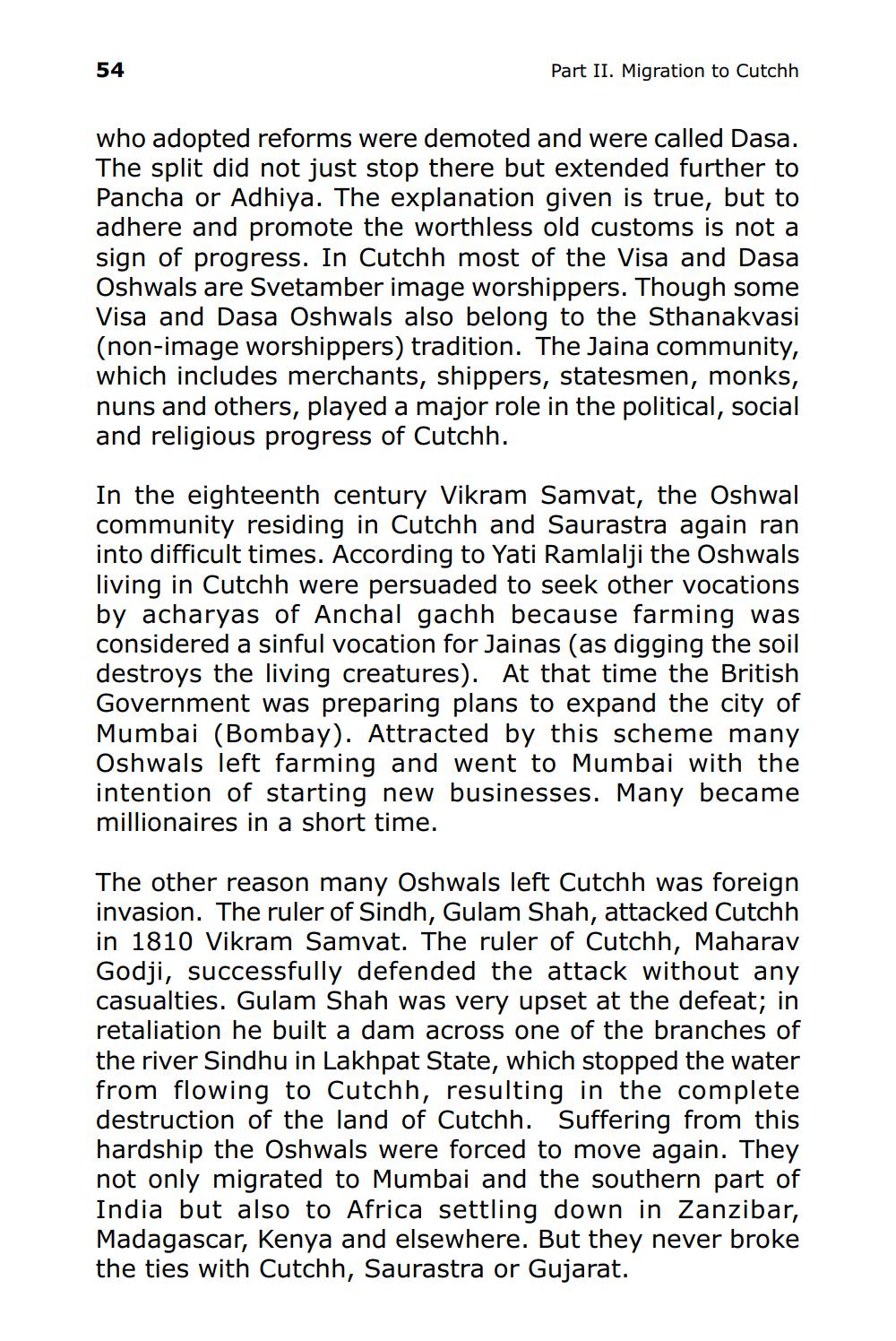________________
54
Part II. Migration to Cutchh
who adopted reforms were demoted and were called Dasa. The split did not just stop there but extended further to Pancha or Adhiya. The explanation given is true, but to adhere and promote the worthless old customs is not a sign of progress. In Cutchh most of the Visa and Dasa Oshwals are Svetamber image worshippers. Though some Visa and Dasa Oshwals also belong to the Sthanakvasi (non-image worshippers) tradition. The Jaina community, which includes merchants, shippers, statesmen, monks, nuns and others, played a major role in the political, social and religious progress of Cutchh.
In the eighteenth century Vikram Samvat, the Oshwal community residing in Cutchh and Saurastra again ran into difficult times. According to Yati Ramlalji the Oshwals living in Cutchh were persuaded to seek other vocations by acharyas of Anchal gachh because farming was considered a sinful vocation for Jainas (as digging the soil destroys the living creatures). At that time the British Government was preparing plans to expand the city of Mumbai (Bombay). Attracted by this scheme many Oshwals left farming and went to Mumbai with the intention of starting new businesses. Many became millionaires in a short time.
The other reason many Oshwals left Cutchh was foreign invasion. The ruler of Sindh, Gulam Shah, attacked Cutchh in 1810 Vikram Samvat. The ruler of Cutchh, Maharav Godji, successfully defended the attack without any casualties. Gulam Shah was very upset at the defeat; in retaliation he built a dam across one of the branches of the river Sindhu in Lakhpat State, which stopped the water from flowing to Cutchh, resulting in the complete destruction of the land of Cutchh. Suffering from this hardship the Oshwals were forced to move again. They not only migrated to Mumbai and the southern part of India but also to Africa settling down in Zanzibar, Madagascar, Kenya and elsewhere. But they never broke the ties with Cutchh, Saurastra or Gujarat.




